
Share this story
- “There are some clear impacts of the pandemic across student achievement, engagement, and attainment outcomes," said Camille Mikkelsen, a research assistant from @EPIC_UNC about Western N.C. districts supported by @DogwoodHealth.
- How do Western N.C. school districts compare to the rest of the state when it comes to student achievement? Here’s what these @EPIC_UNC researchers found.
|
|
Students in Western North Carolina mirror the rest of the state when it comes to poor outcomes post-COVID, and the growth of teachers and administrators of color in the region isn’t matching pace with the increase in students of color.
These are just some of the findings of the Education Policy Initiative at Carolina (EPIC) in a recent report. The Dogwood Health Trust (DHT) tapped EPIC to perform an analysis of Western North Carolina districts supported by the organization and compare them to the rest of Western North Carolina and the state, and those findings were discussed in a webinar Wednesday.
In the charts below, you can see the trajectory of student proficiency on elementary, middle, and high school end-of-grade tests and note the dramatic downward turn around the time of the pandemic.
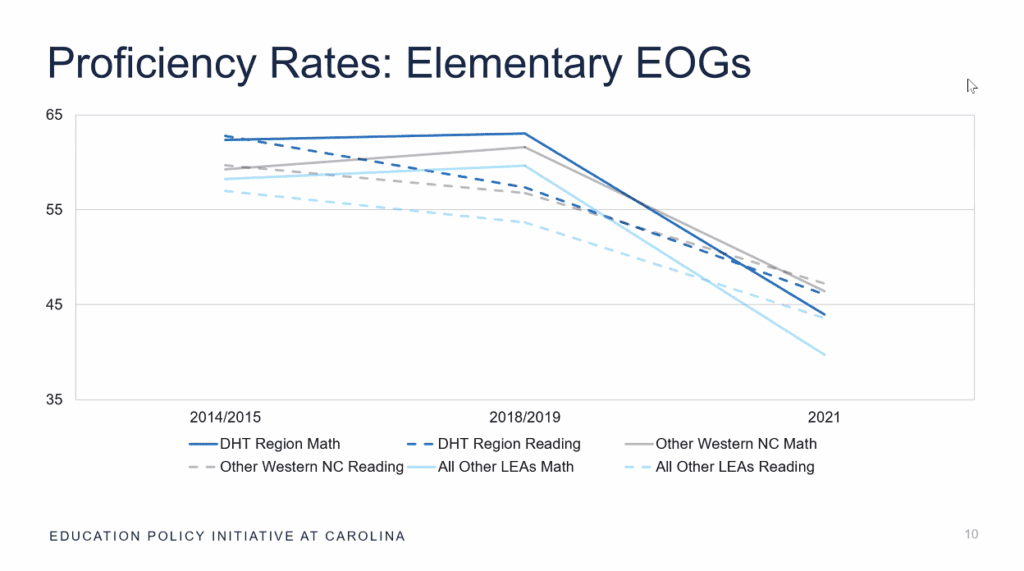
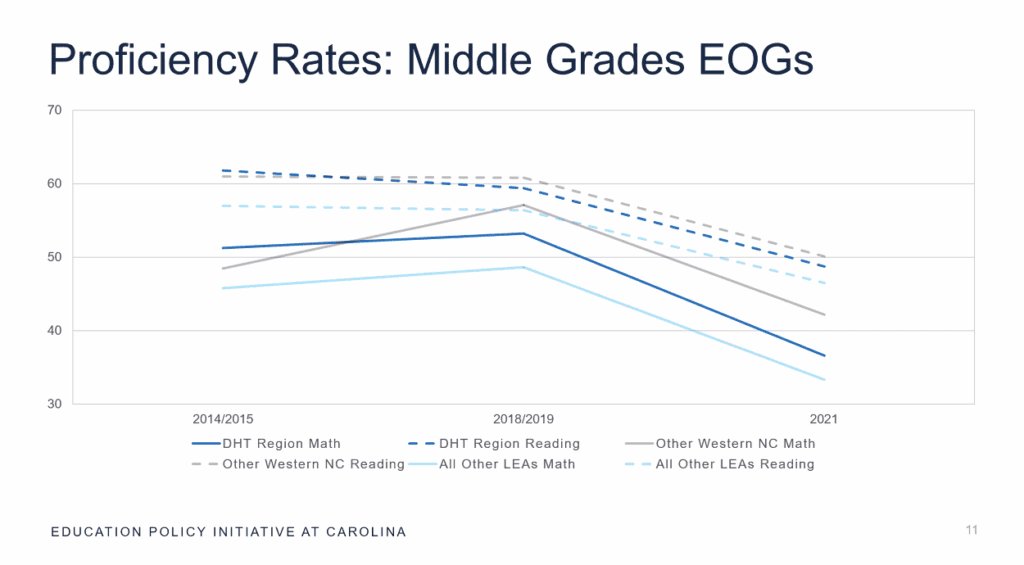
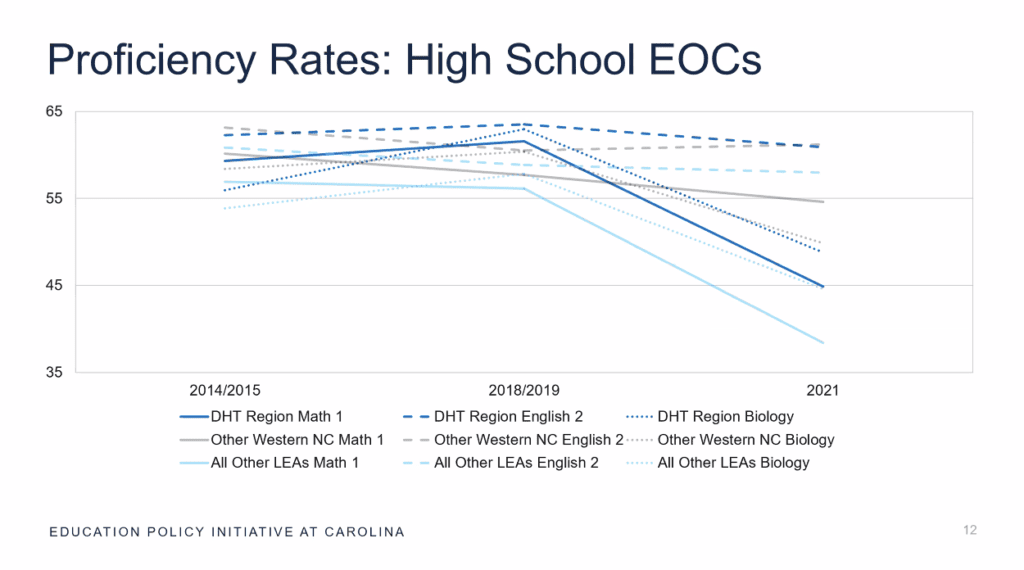
“There are some clear impacts of the pandemic across student achievement, engagement, and attainment outcomes,” said Camille Mikkelsen, a research assistant from EPIC who presented during the webinar.
EPIC used data from 2013-14, 2014-15, 2017-18, 2018-19, and 2021-22, and looked at metrics such as test scores, course grades, attendance, discipline, and more. The Western North Carolina districts supported by DHT encompassed 19 school districts, while there were seven other Western North Carolina districts not included in that group. There were 89 districts outside of the Western portion of the state also considered for comparison.
These are the 19 western school districts represented: Cherokee, Clay, Graham, Jackson, Macon, Swain, Buncombe, Asheville, Haywood, Henderson, Madison, Transylvania, Avery, Burke, McDowell, Mitchell, Polk, Rutherford, and Yancey.
The presenters also focused on student subgroups in the DHT region in their report.
The demographics in Western North Carolina are different than the rest of the state. According to EPIC’s report, the vast majority of students in the DHT region and Western North Carolina districts in general are white, compared to the percentage in the rest of the state. Black students make up only 4.98% of the DHT region and about 4% of other Western North Carolina districts. In the rest of the state, that average is 27.36%.
Among sub-groups of students, Black students were least likely to be proficient at any level of K-12 education.
High-poverty schools also struggled in proficiency in the DHT region, as did students with disabilities, and Limited English Proficiency students. Both Black students and Native American students also lagged particularly far behind their peers when it came to course grades in middle and high school in the Western DHT region.
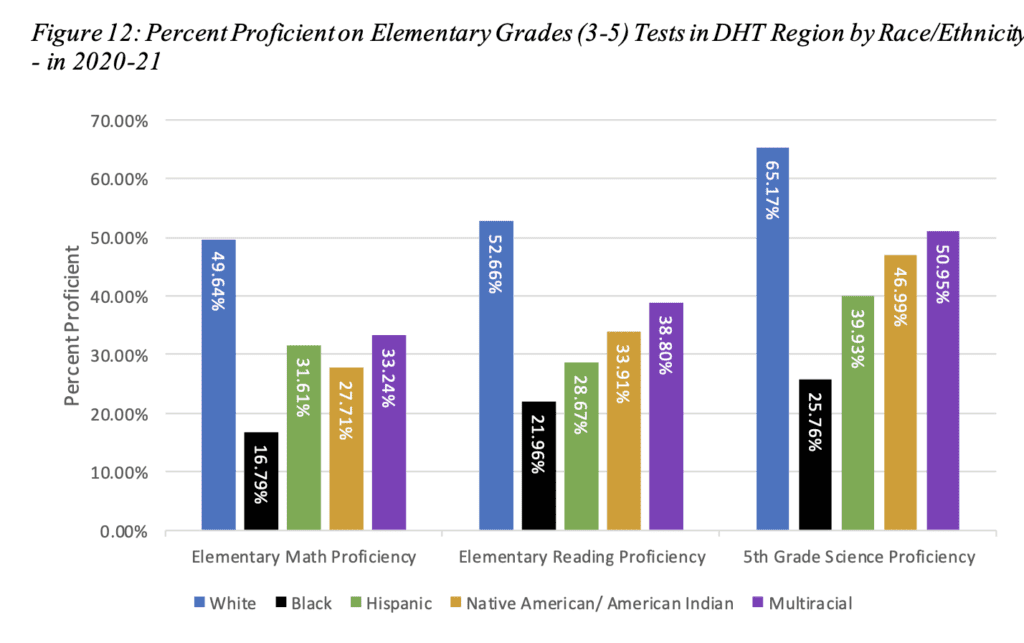
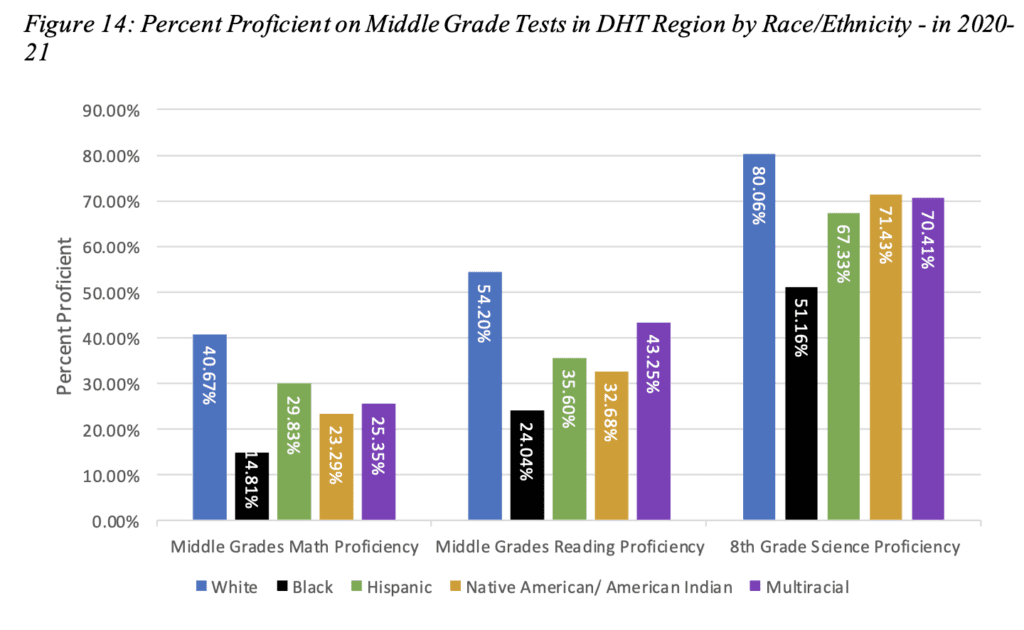
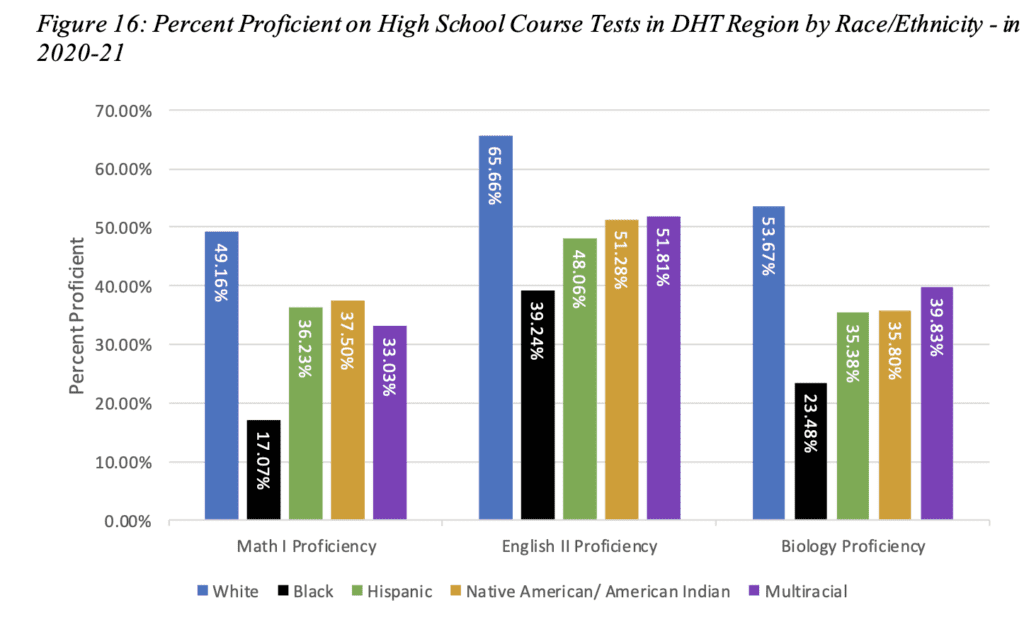
Absences and chronic absences have steadily trended upward over the years studied by EPIC, but Black students far and away were absent more often. Black students missed an average of 20 days of school in the 2020-21 school year. Students with disabilities, Limited English Proficiency Students, and economically-disadvantaged students were also more likely to miss school.
“These student groups who are struggling in school are also more likely to be absent,” said Sarah Crittenden Fuller, a research associate professor with EPIC who presented during the webinar.
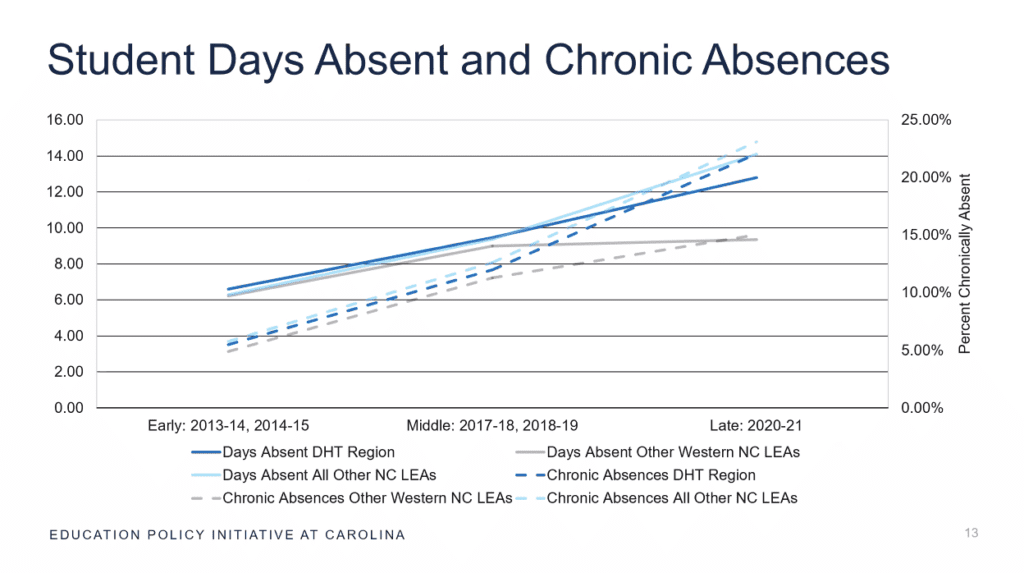
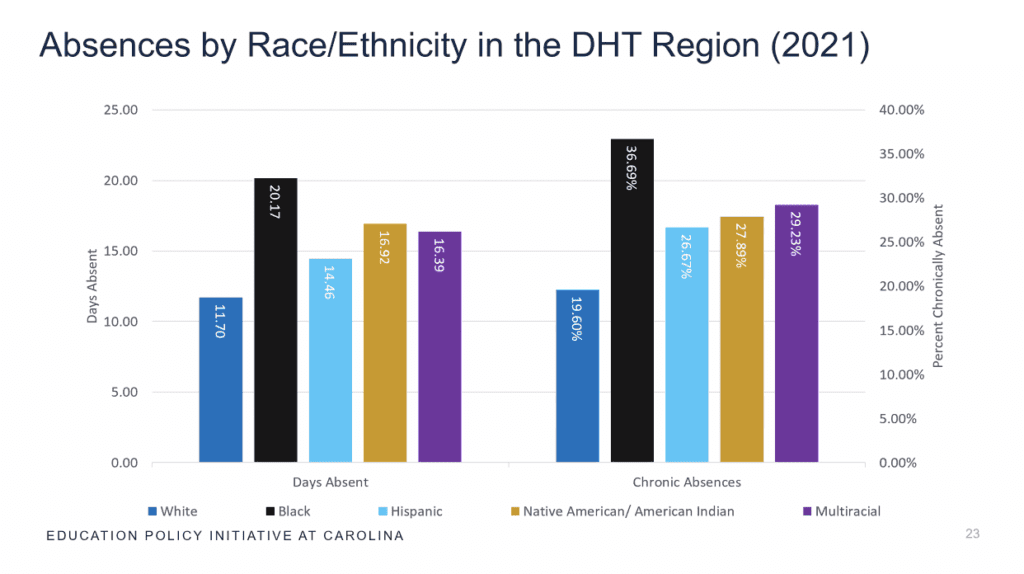
Coupled with that, Black students are also far more likely in the DHT region to get out-of-school suspension than their peers.
“These are high relative to their peers in the western part of the state. They are also high relative to Black students across the state,” Fuller said. “We know that suspensions are related to a lot of bad outcomes … We don’t want to be pushing these students out of school.”
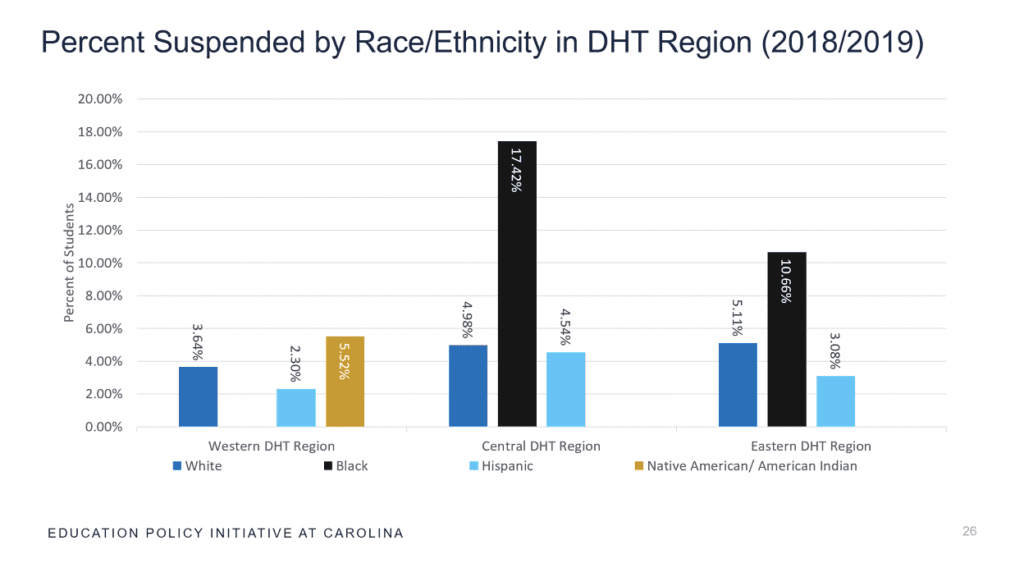
Kevin Bastian, director of EPIC, presented on data that can show the districts in the DHT region potential areas of opportunities. He highlighted the fact that while the percent of students of color has been rising over the years, there hasn’t also been an increase in teachers or principals of color.
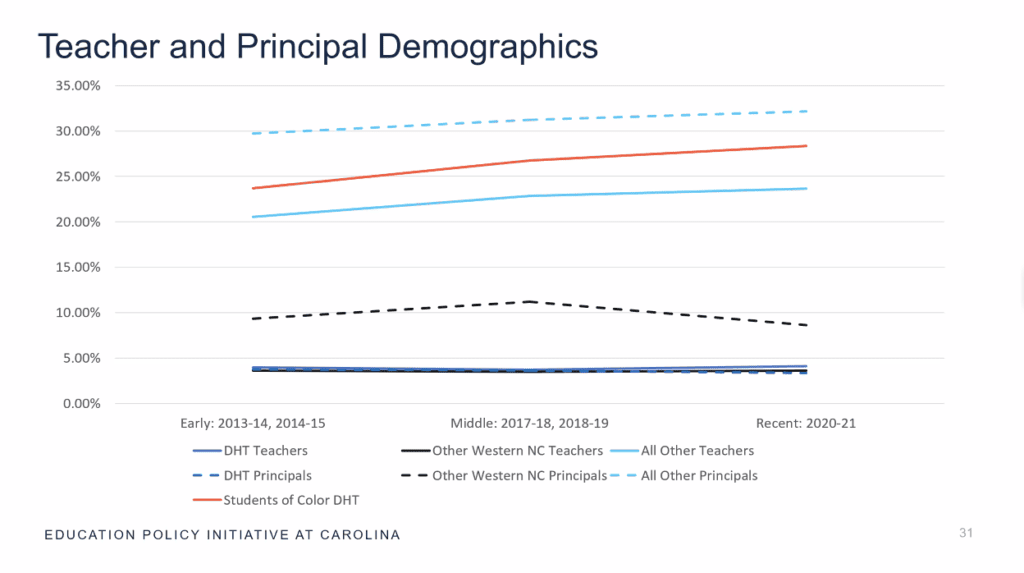
EPIC also found that when it came to teacher preparation, the majority of the DHT region’s teachers were prepared in traditional teacher preparation programs. The region lagged behind the rest of Western NC. Both the DHT region and the rest of Western NC school districts were better in this regard than the rest of the state.
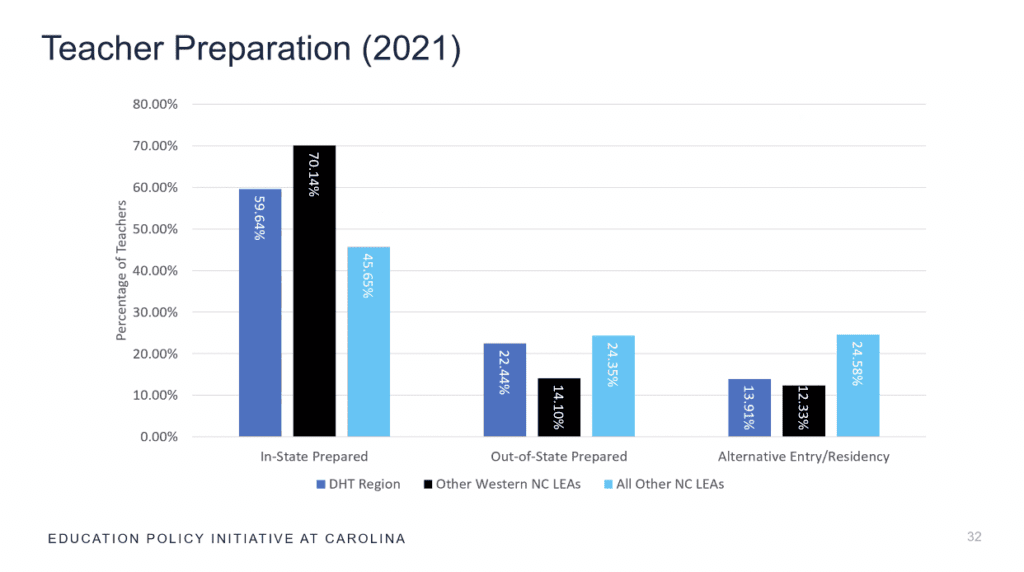
“This is important because on average we find that in-state prepared teachers are more likely to stay in teaching in the state, and they are a little more effective,” Bastion said.
When it comes to how well teachers perform, the DHT region excelled on evaluations but fell behind the other western districts in EVAAS scores. Both the DHT region and Western NC performed better than the rest of the state on both measures.
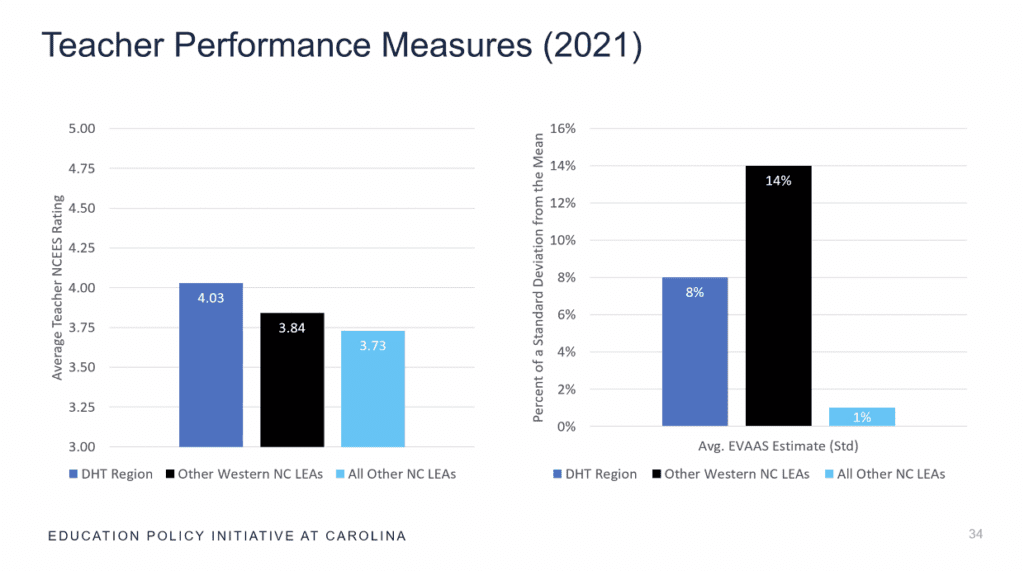
And on advanced courses, students in the DHT region were in between the rest of Western NC and the rest of the state when it came to taking Advanced Placement, International Baccalaureate, and dual-enrollment courses.
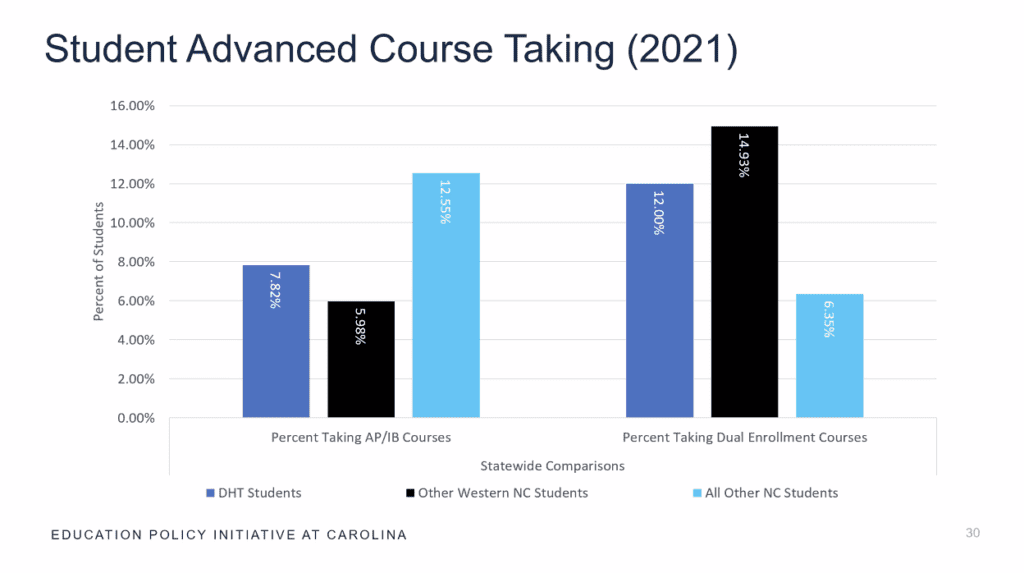
Ereka Williams, vice president for education at DHT, said DHT plans to share these results widely with the communities supported by the organization and choose a way forward in partnership with them.
“It will serve as our guide as we amplify our work around k-12 education,” she said earlier in the webinar.




